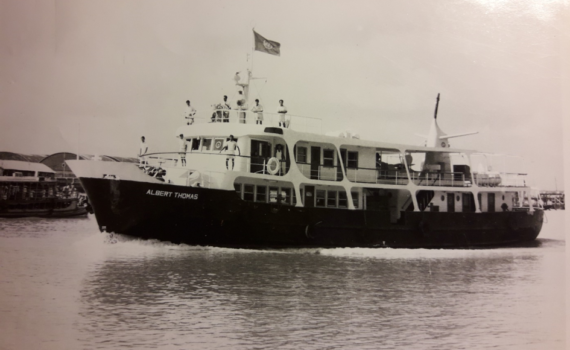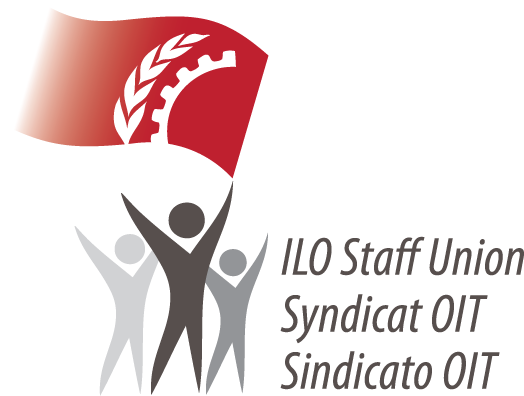
The ALBERT THOMAS Ship / Siegfried E. Schoen
Category : Centenary - Testimonials
- Introduction
In 1919, Albert Thomas became the first Director of the ILO.
How might he have reacted, seeing 55 years later a ship sailing under the UNITED NATIONS flag in Bangladesh waters and bearing his name? I leave the answer(s) to the readers‘ imagination but will report here how the ship and its name came about.
Project BGD/72/003 and Purchase of the HAMAYU MARU ship
From Jan. 1971 to Dec. 1976, an ILO executed technical cooperation project entitled „Inland Waterways Deck Personnel Training Centre Narayanganj BGD/72/003“ was active in Bangladesh.
ILO, UNDP and the Inland Waterways Authority of the Government of Bangladesh were cooperating partners of the project. In order to achieve the project‘s objective, namely the effective training of inland waterways desk personnel, the project document provided for the acquisition of a suitable ship. ILO‘s Maritime Branch (MARIT) and the local Bangladesh Inland Waterways Authority had the task to find such a ship.
Political instability and upheavels in Bangladesh during the lifetime of the project caused delays in its normal operations. In these circumstances, the procurement of a suitable training ship had to be effected by direct selection rather than by the usual international competitive bidding process. Finally, a limited search in some Asian countries led to an acceptable ship named HAMAYU MARU in Japan.
The ship‘s log-book listed the following technical specifications and other relevant data:
Length: 29.69 m
Breadth: 6.10 m
Depth: 2.70 m
Draught: 1.70 m
Gross tonnage: 155.92 tons
Main engines: 4 cycles, 6 cylinder, 600 BH
Built: 30. April 1966 by Kurinoura Dockyard in Japan
Prior to the puchase by ILO, the HAMAYU MARU had been in use as a ferry- vessel for transporting mainly people between a group of islands in Japan.
By simple definition, a ship may be classified as being a piece of equipment. As Chief of the then Equipment and Supplies Branch (ESB) it was one of my duties to assist MARIT in negotiating and concluding the purchase-contract for the ship.
Since I had no special knowledge and experience of the intricacies and pitfalls of procuring a ship, I was advised by Internal Audit to contact FAO‘s Shipping and Transport Department in Rome. There, I learned that this Organisation had on a regular basis a fleet of ships under contract for transports of mostly grain and other food-related articles. An indepth briefing there was of great help to me for my future task in Japan.
The purchase-contract for acquiring the HAMAYU MARU covered basically:
- the ship and its upgrading from ferry-boat conditions to so-called ocean-going standards;
- a crew capable of maneuvering the ship under its own power from Japan to Bangladesh;
- all together at a cost of US $ 239.555,-.
A draft of the purchase-contract, prepared jointly by officials from MARIT, LEGAL and myself, was the basis for my forthcoming mission to Japan in order to conclude the contract.
Following lengthy negotiations with the Japanese shipowner company, I signed for the ILO the purchase-contract in the ILO Tokyo Branch Office in November 1974 (see photo with Albert Thomas looking from the wall). My contractual counterpart was a representative from the shipowner company.
After a busy five days stay in Tokyo, I left Japan with a kind of heroic feeling having successfully concluded the purchase-contract for the ship. However, as a common proverb states: „never praise the day before nightfall“…
A few weeks after my return to Geneva, the proverb became reality. I received a telegraphic message from Tokyo with the following text: „Ship left Japanese harbour – yesterday – 18:00 hours – „certificate of ocean-going“ not yet obtained – regards“.
Wow! The ship was out on the ocean, but the „certificate of ocean-going“ from the Japanese Maritime Bureau had not been obtained. Could this be true? After all, such a neglect could have caused all kinds of complications if an accident had happened to the ship and/or its crew. Fortunately, after a sleepless night, the following day another more detailed telegram confirmed: a) the receipt of the written „ocean-going certificate“ by the ILO Office in Tokyo; and b) that the inspection by the Japanese Maritime Bureau resulting in a verbal „go“, had taken place prior to the ship leaving Japan. From there on, my blood-pressure came down to normal!
III. Renaming of the HAMAYU MARU to become the ALBERT THOMAS Ship and concluding remarks
With the signing of the purchase-contract, the ownership changed and a new name had to be found and given to the ship.The idea to use the name Albert Thomas stemmed, as I remember, from the then Director of FINAD, Mr. P.M.C. Denby. His suggestion was subsequently accepted by ILO‘s Director-General, Mr. F. Blanchard, agreed to by the local Resident Representative of UNDP and the Inland Waterways Authority of the Bangladesh Government.
Why was the name Albert Thomas chosen to be put onto the ship? For the ILO this choice was most meaningful. Albert Thomas was not only the first Director General of the Office/Organisation (1919-1932), but also the best ambassador of its principle mandate, i.e. Social Justice based on Tripartism in the World of Labour.
In early 1975, after a 3-weeks journey from Japan via Singapore, the ship arrived safely in Bangladesh and thus had finally proven its ocean-going ability. From there onwards, the ship was put to good service on the country‘s inland waterways – under its new name Albert Thomas.
Acknowledgments and Personal Considerations
In writing this article, I should like to acknowledge the helpful support provided by the Office‘s Archives Service as well as by the following ILO colleagues: Ivan Elsmark, Max Kern, Jaques Rodriguez, and Uwe Seier.
Unfortunately, the fate of the ship which was transferred to the Bangladesh Inland Waterways Authority at the end of the project (Dec. 1976) is not traceable anymore.
In my 26 years (1968-1994) of professional involvement in international public procurement with the ILO, I came across hundreds of technical cooperation projects and consequently thousands of different equipment items, ranging from – to give just two exotic examples – a model railway with traffic-simulation-possibilities for training of railway personnel in Egypt to explosives and detonators for training of road-construction personnel in Nepal.
However, the purchase of the HAMAYU MARU /ALBERT THOMAS Ship was both: a memorable and a unique event by its linkage to the name of one of ILO‘s most remarkable personalities, i.e. Albert Thomas.
 The Section of Former Officials of the ILO
The Section of Former Officials of the ILO